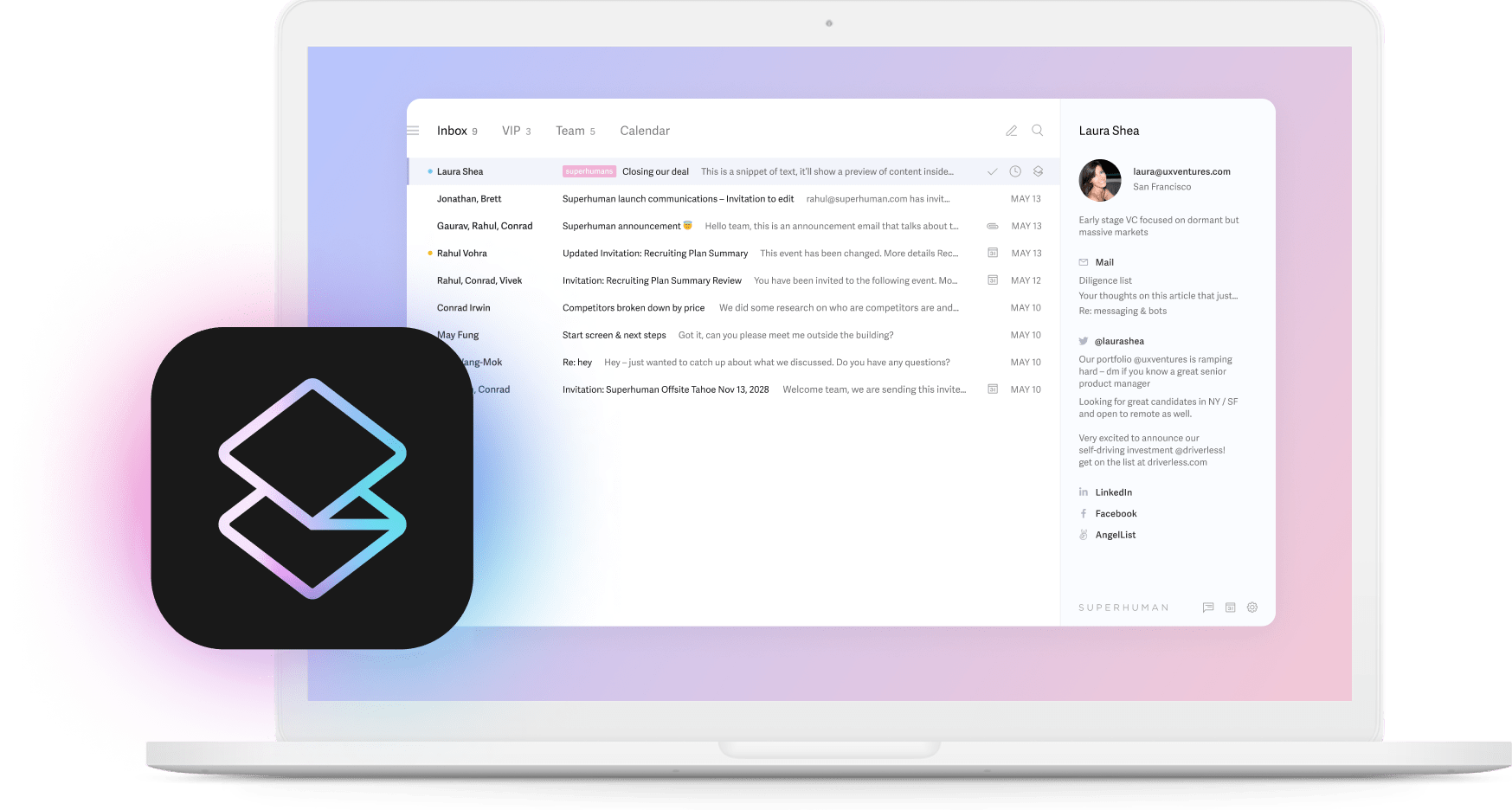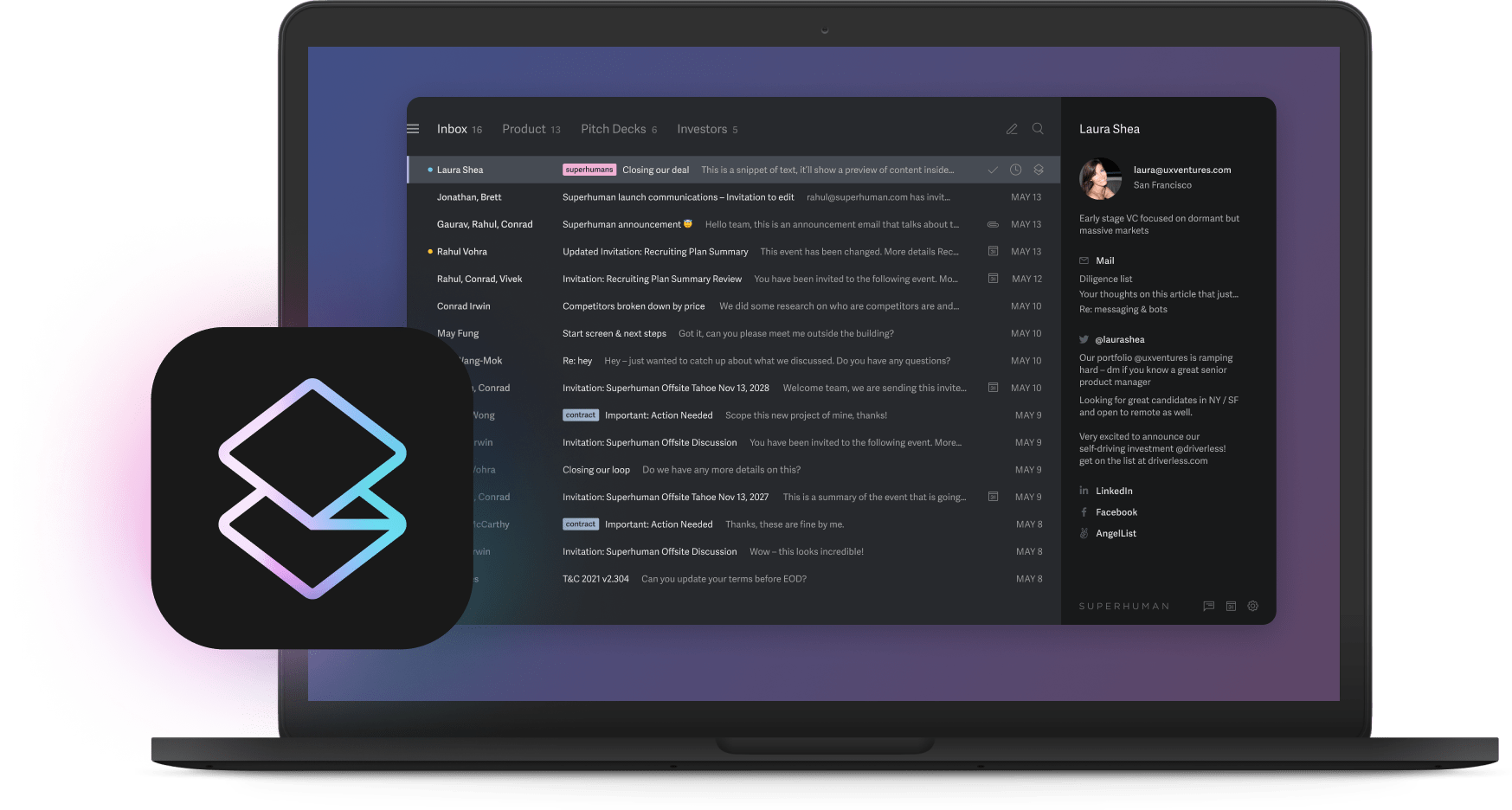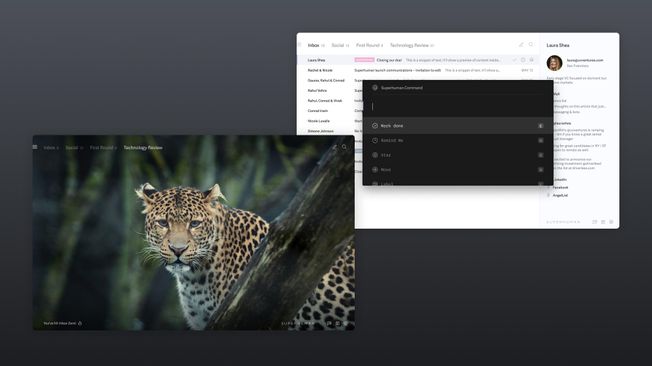
Your inbox hits 200 emails daily, Slack threads multiply faster than you can respond, and meetings consume hours you need for actual work. This scenario isn't unique. More than half of every workday gets spent managing email, messaging, and calendar, leaving executives buried under communication instead of leading their teams.
AI communication tools change this equation. According to our data, industry-leading companies are 3x more likely to report productivity gains from AI-native communication platforms that prioritize what matters, draft responses in your voice, and surface critical insights.
This playbook shows you how to choose the right AI communication and collaboration tools and save 4 hours every week while sharpening your decision-making.
What is AI communication and collaboration?
AI communication and collaboration means using smart technology to handle your daily work conversations and team coordination. These systems learn from your communication patterns and automatically sort, prioritize, and even draft messages so you can focus on decisions that matter.
The technology works through four key functions:
- It pulls information from your email, chat apps, and business tools automatically
- It spots patterns and problems in how your team communicates
- It figures out which messages need your attention first
- It suggests replies, meeting times, and next steps based on what worked before
This represents a major shift from traditional communication tools. Instead of manually sorting through hundreds of emails or waiting for someone to compile reports, AI handles the routine work. You get instant access to what's important while everything else gets organized in the background.
These systems solve real problems that slow down every leadership team. Information overload becomes manageable when dashboards show only what needs action. Data from different departments gets combined instantly instead of taking days to compile. Decision-making speeds up because you see relevant context immediately rather than hunting through old messages and files.
The competitive advantage of AI communication and collaboration
Your inbox hits 200 emails and three urgent Slack threads are blinking. This scenario plays out in executive offices daily. The difference between leaders who thrive and those who struggle comes down to their communication infrastructure.
Our productivity report shows that top-performing companies are three times more likely to report productivity gains from AI. These organizations didn't just add AI features to existing tools. They rebuilt their communication stack around intelligence-first platforms that learn, adapt, and anticipate needs.
Companies implementing AI communication platforms generally see increased employee efficiency and reduced email processing time by significant margins after implementing automated summaries and smart routing. When the busywork disappears, you get those hours back for strategy work.
Why AI-native platforms outperform add-ons
While many companies bolt AI onto existing tools, truly AI-native platforms build intelligence into their foundation. This architectural difference determines how effectively AI enhances your decision-making process.
AI-native systems like Superhuman analyze patterns across all your communications to continuously improve. They learn your writing style, understand your relationships, and adapt to your unique workflow. When email, calendar, and productivity tools share the same AI engine, insights flow seamlessly between applications.
Traditional tools with AI add-ons operate in silos. Their AI can only see part of the picture, limiting effectiveness. Native AI systems see everything, enabling more accurate predictions and better recommendations. Instead of manually sorting through hundreds of emails, intelligent systems automatically surface high-priority messages from key stakeholders.
Long email threads get condensed into actionable insights within seconds. For example, Auto Summarize can turn a 20-message thread into three key points, letting you understand the situation and respond without reading every exchange.
Solving cross-functional collaboration challenges
Cross-functional projects typically die in the handoffs. Marketing finishes their piece, but engineering doesn't know what changed. Sales has questions, but the product team's already moved on to the next sprint.
Intelligent platforms fix this by keeping everyone synchronized automatically. When someone joins a project late or misses a key meeting, automated summaries get them up to speed instantly.
Shared Conversations in Superhuman promotes aligned decision-making directly within email, eliminating the need to toggle between Slack, docs, or CRMs. Smart updates remind project owners to share progress, so nothing disappears into someone's to-do list. The result? Fewer "Who owns this?" moments and smoother handoffs.
AI communication and collaboration implementation strategy
Start by mapping where your conversations actually break down. You need hard numbers on inbox volume, response times, and how many meetings you spend just clarifying basic information. Information silos and slow data consolidation create the biggest decision bottlenecks. Capture these metrics now, they become proof of your success later.
Three-phase rollout strategy
Your rollout works best in three focused phases:
Phase one: Executive pilot. Deploy tools to a small leadership team tackling urgent, repetitive tasks. Daily feedback loops help you refine workflows without disrupting the broader organization. This phase proves the concept and builds internal champions. Starting small builds executive trust and accelerates skill development, which makes everything that follows easier.
Phase two: Department expansion. Expand to departments that work closely with leadership. You'll integrate dashboards and real-time alerts, then measure how quickly decisions move from discussion to approval. This phase demonstrates cross-functional value and identifies integration challenges early.
Phase three: Full integration. Connect your platform to everything else: CRM systems, project management tools, and knowledge bases. Pair technical setup with hands-on workshops so every team understands when to trust intelligent recommendations and when to add human judgment.
Secure visible leadership sponsorship throughout. When executives model smart AI habits, concise prompts, fast iterations, continuous refinement, adoption spreads naturally across your organization.
Ensuring successful adoption
Address common obstacles before they derail progress. Any tool that touches executive email must meet strict privacy, security, and compliance standards. Build a clear data governance framework that defines ownership, retention, and encryption standards before you start. Choose platforms with modular connectors so you can sync systems one step at a time.
Even with perfect security, adoption stalls if leaders feel pressed for time by yet another dashboard. Start with personalized onboarding that configures notifications, tone settings, and inbox rules for each executive. A small pilot proves value fast and builds momentum. Introduce features gradually. Launch automated summarization first, then add predictive prioritization once habits form.
Track four numbers weekly:
- Hours saved per executive
- Decision cycle time
- Unanswered follow-ups
- Project completion speed.
Convert time savings into direct labor costs to calculate ROI, then share those results company-wide. Public dashboards, all-hands recognition, and quick case studies turn early wins into cultural momentum.
Choosing AI communication and collaboration platforms
Look for systems that integrate with your existing workflow rather than requiring you to learn new interfaces. Superhuman exemplifies this approach by enhancing email, the tool where executives spend more than half of every workday according to our AI productivity report, rather than adding another app to your stack.
When evaluating options, prioritize platforms that offer multiple AI capabilities in one system. This reduces complexity, improves adoption, and ensures consistent data across your communication processes. Look for these essential features:
- Integration capabilities with existing enterprise systems to ensure compatibility and data flow
- Strong security and compliance standards to protect sensitive communications
- Scalability that grows with your organization as communication demands increase
- User experience design that influences adoption rates among executives
The difference comes down to choosing solutions that understand your context. Superhuman's AI analyzes messages you've previously sent to specific recipients and naturally matches your tone and voice for each relationship. It gets better over time simply by observing your writing patterns, without needing constant feedback or corrections.
When timing matters for follow-ups, Read Statuses show when messages were opened and on which device, helping you decide whether someone missed your email entirely or read it on mobile and might need a gentler follow-up.
For teams that send similar responses regularly, Snippets let you quickly insert proven templates and share effective messaging across your organization.
AI communication tools for executive collaboration
Organizations implementing intelligent communication platforms see measurable improvements across key metrics. According to our productivity research, Superhuman customers who use AI save 37% more time than those who don't. Experience how Superhuman can redefine your inbox management and boost your efficiency.
Start your free trial of Superhuman →





